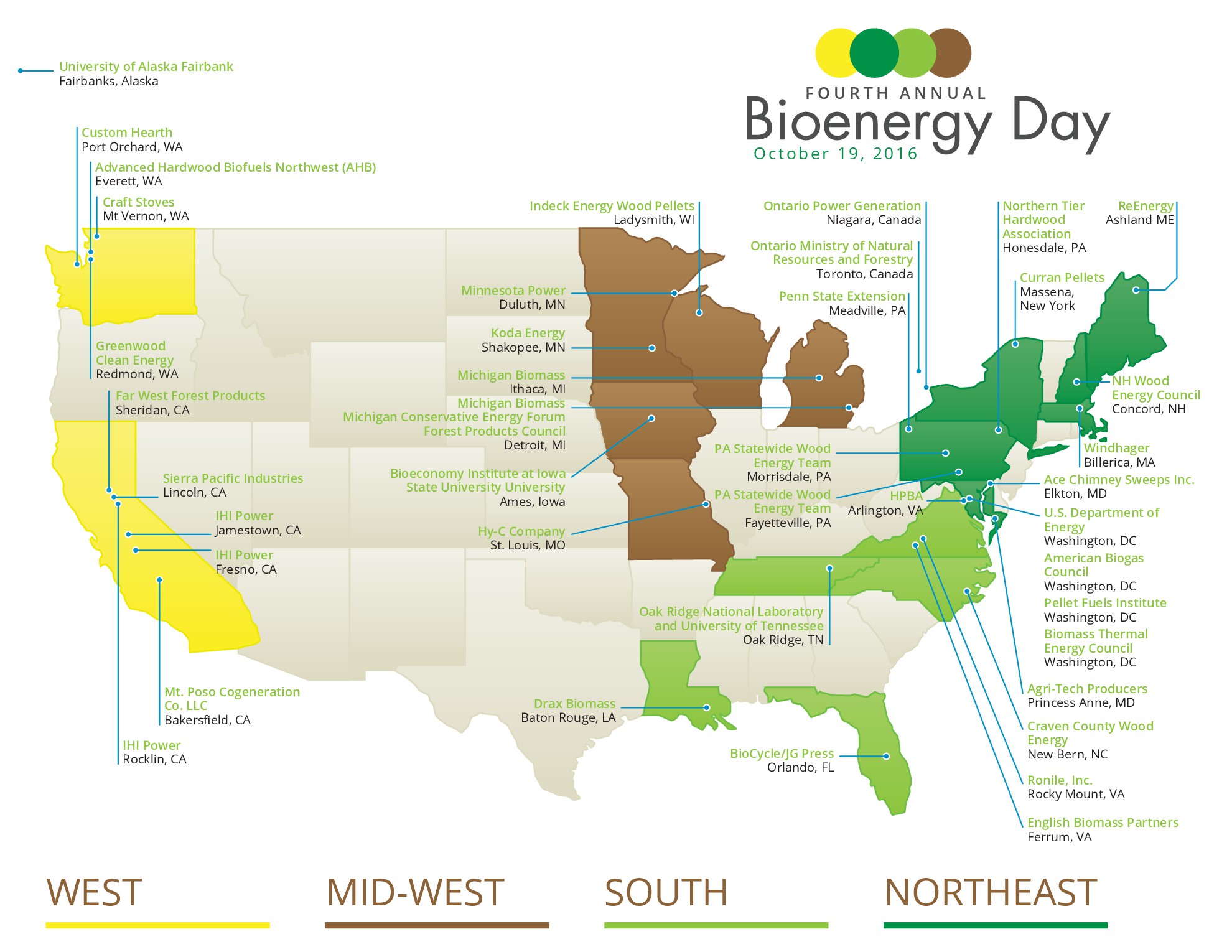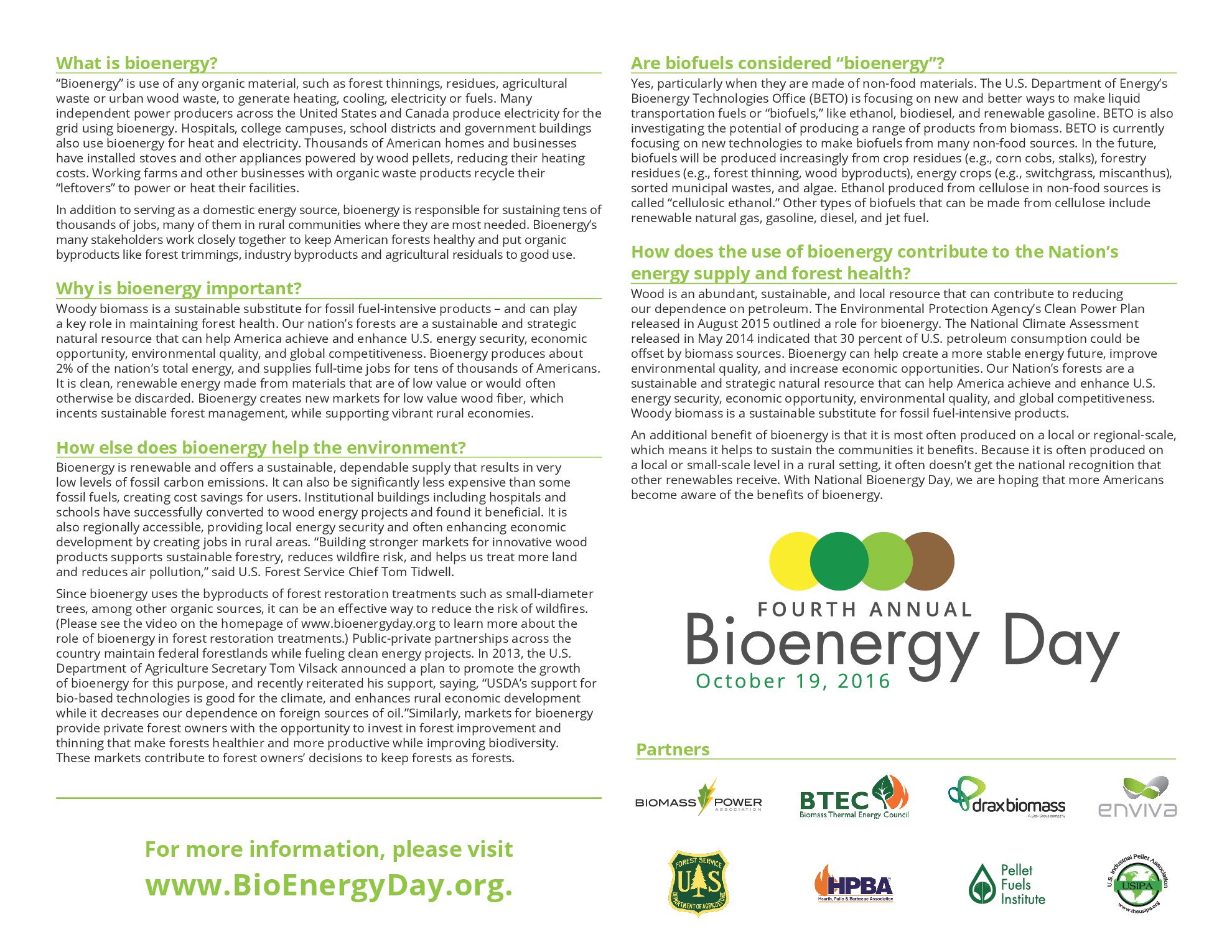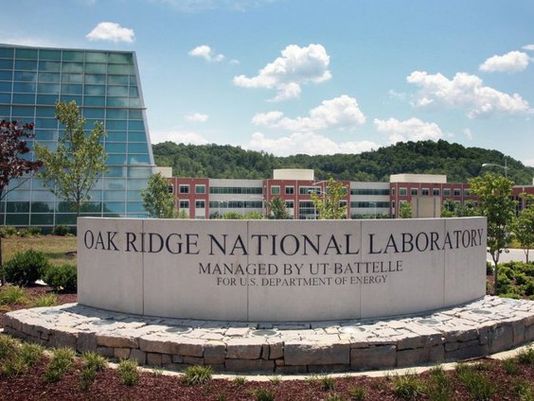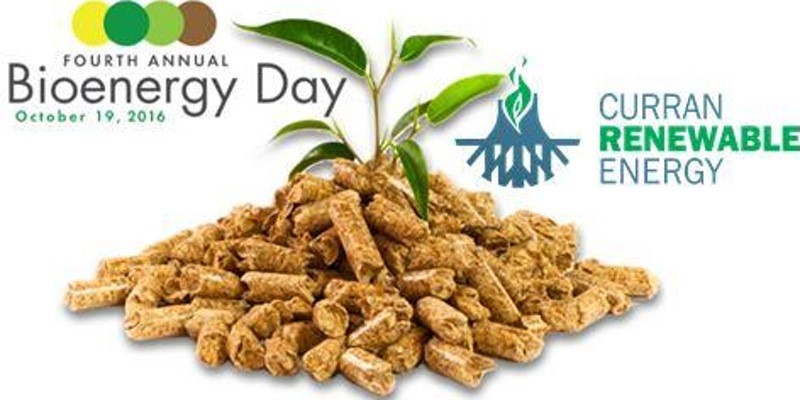25 x 25 Resource released an excellent post celebrates the Bioenergy Dayby drawing attention to important topics in the bioenergy world including research and policy. 25 x 25 Resource is a forerunning renewable energy advocacy campaign. The vision behind the name is a goal that America’s energy will be 25% renewable by the year 2025. Learn more about them on their homepage.
“National Bioenergy Day Recognizes Sector’s Economic, Environmental Benefits | October 19, 2016
More than 50 companies, institutions, agencies and organizations around the country today are celebrating the fourth annual National Bioenergy Day and highlighting the energy, environmental and economic benefits of bioenergy, biomass, and biobased products.
So, what exactly is bioenergy? Bioenergy is the use of any organic material, such as forest thinnings, agricultural residues and urban wood waste, to generate electricity, heating and cooling. Renewable biomass can also be converted to biofuel to power transportation. Energy from biomass represents close to half of all renewable energy production.
The benefits of bioenergy are enjoyed at the local, state and national levels. Many independent power producers generate electricity for the grid using bioenergy. Hospitals, college campuses, school districts and government buildings also use bioenergy for heat and electricity. Thousands of homes and businesses have installed stoves and other appliances fueled by wood pellets, reducing their heating costs. Working farms and other businesses with organic waste products recycle their “leftovers” to power or heat their facilities.
Sponsored by the Biomass Power Association, Biomass Magazine, the U.S. Industrial Pellet Association, the Biomass Thermal Energy Council, the Hearth, Patio and Barbecue Association, Pellet Fuels Institute, Drax and Enviva, the day’s events aim at educating more people – media, elected officials and communities – about the benefits of bioenergy as a critical renewable energy source, along with the many solutions it presents.
Events are being held in Arizona, California, Colorado, Connecticut, Florida, Iowa, Louisiana, Maine, Maryland, Massachusetts, Michigan, Minnesota, Missouri, Nebraska, New Hampshire, New York, North Carolina, Oregon, Pennsylvania, Tennessee, Vermont, Virginia, Washington state, and Washington, D.C., as well as a number of locations in Canada.
As an example, one of the events that is being held this afternoon will be at the University of Tennessee Arboretum Auditorium. There, with the help of DOE’s Oak Ridge National Laboratory and the U.S. Forest Service, as well as contributions from several other sponsors, young aspiring scientists can spend a couple of hours investigating the world of bioenergy with hands-on experiments, handling switchgrass seeds and talking with experts who are building bioenergy resources to power the world.
Why the hoopla? Because bioenergy produces some 5.3 percent of this country’s total energy and is responsible for sustaining tens of thousands of jobs, many of which are in rural communities where they are most needed. On an international scale, countries like the United Kingdom, Belgium and Denmark meet ambitious national renewable energy standards, in large part, through densified wood pellets – produced here in the United States that originate from low value wood gleaned from forest-thinning operations in sustainably managed forests.
There is a more than ample supply of bioenergy feedstocks, as verified by the latest update of an ever-evolving DOE report on biomass. The Billion Ton Update reaffirms that by the year 2040 the United States has the potential to sustainably produce at least one billion tons of nonfood biomass resources that could be used for low- and no-carbon biofuel and biopower, as well as other bioproducts.
Research from scientists with the DOE’s Argonne National Laboratory, the University of Illinois and the International Food Policy Research Institute in Washington, D.C. – who collected and analyzed data from worldwide field observations of major land use change from cropland, grassland and forests to land producing biofuel feedstocks – demonstrates the huge carbon sequestration capabilities of energy grasses, tree systems and even corn. The maintenance of healthy North American forests, for example, puts forest trimmings to good use while also reducing carbon emissions that can emanate from dying trees or forest fires.
Critical to maintaining and accelerating the success of bioenergy are the policies that promote its development. For example, Congress is negotiating an energy bill that proposes biomass be deemed “carbon neutral,” recognizing that sustainably produced and managed biomass can offer valuable clean energy contributions and important carbon sequestration services to mitigate climate change. The designation would offer harmony to what are currently 13 different definitions of biomass in various laws and regulations, and allow for the full potential of bioenergy solutions.
The 25x’25 Alliance commends the sector for its contributions and encourages all to learn more about bioenergy. But efforts must extend beyond a single day. The work must be sustained to convince policy makers and regulators that bioenergy can help bring about an energy future that creates jobs, improves our air and water, and strengthens our energy security.”














